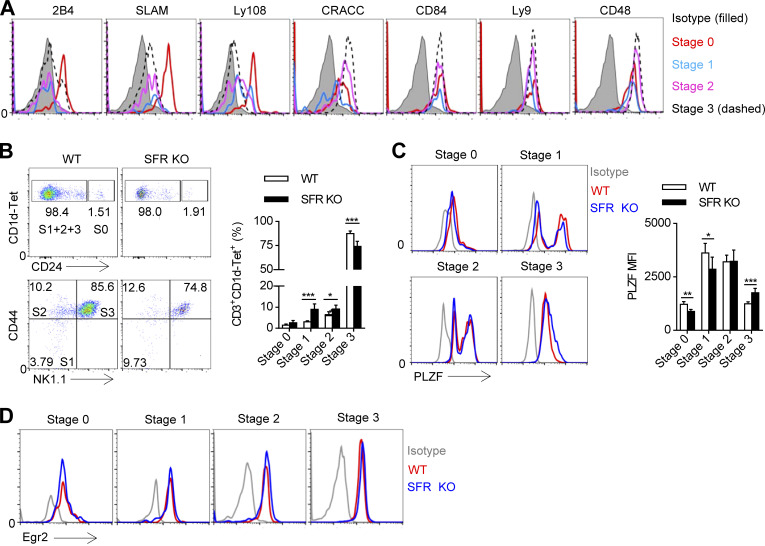Figure 2.
SFR deficiency blocks NKT cell development and PLZF induction at an early stage. (A) Flow cytometric analysis of SFR expression on developing CD3+CD1d-Tet+ NKT cells in the WT thymus, including CD24hi (stage 0), CD24lowCD44lowNK1.1− (stage 1), CD24lowCD44hiNK1.1− (stage 2), and CD24lowCD44hiNK1.1+ (stage 3) cells. The corresponding SFR-deficient cells were used as a negative control. The data are representative of three experiments. (B) Representative flow cytometry plots (left) and percentages (right) of cells in the four stages of development among gated CD3+CD1d-Tet+ NKT cells in the thymus of the indicated mice, S0: stage 0; S1+2+3: stage 1+2+3. Data represent the mean ± SEM of 4–10 mice per group. *, P < 0.05; ***, P < 0.001. (C) Flow cytometric analysis (left) and mean fluorescence intensity (MFI; right) of PLZF expression on the CD3+CD1d-Tet+ NKT cells at the four development stages in the thymus of the indicated mice. Data represent the mean ± SEM of four to seven mice per group. *, P < 0.05; **, P < 0.01; ***, P < 0.001. (D) Flow cytometric analysis of Egr2 expression on the CD3+CD1d-Tet+ NKT cells at the four development stages in the thymus of the indicated mice. The data are representative of three experiments.

